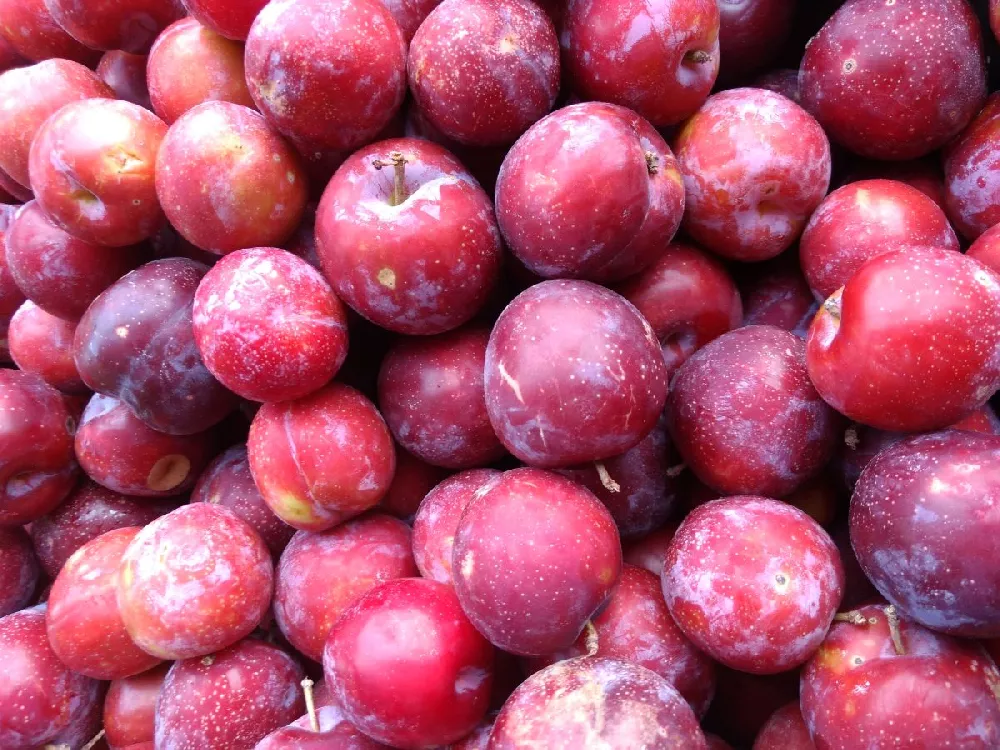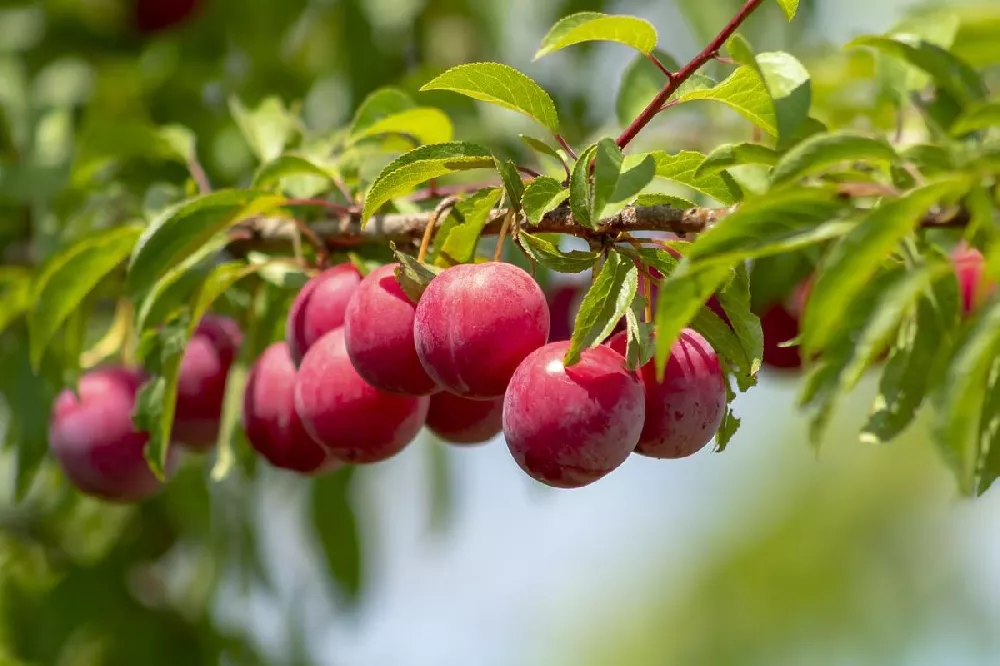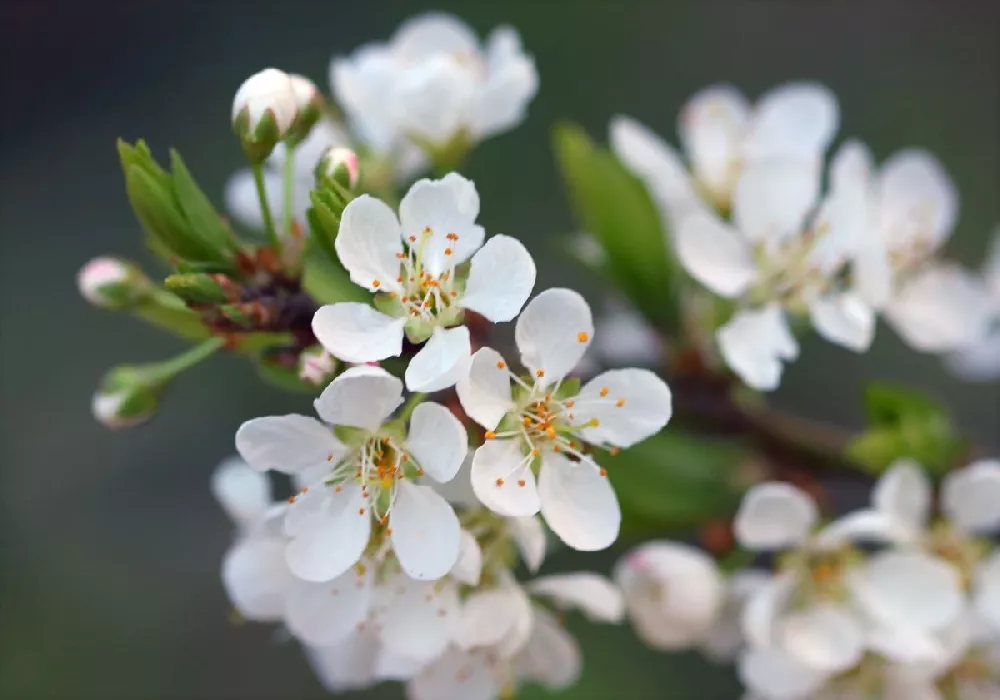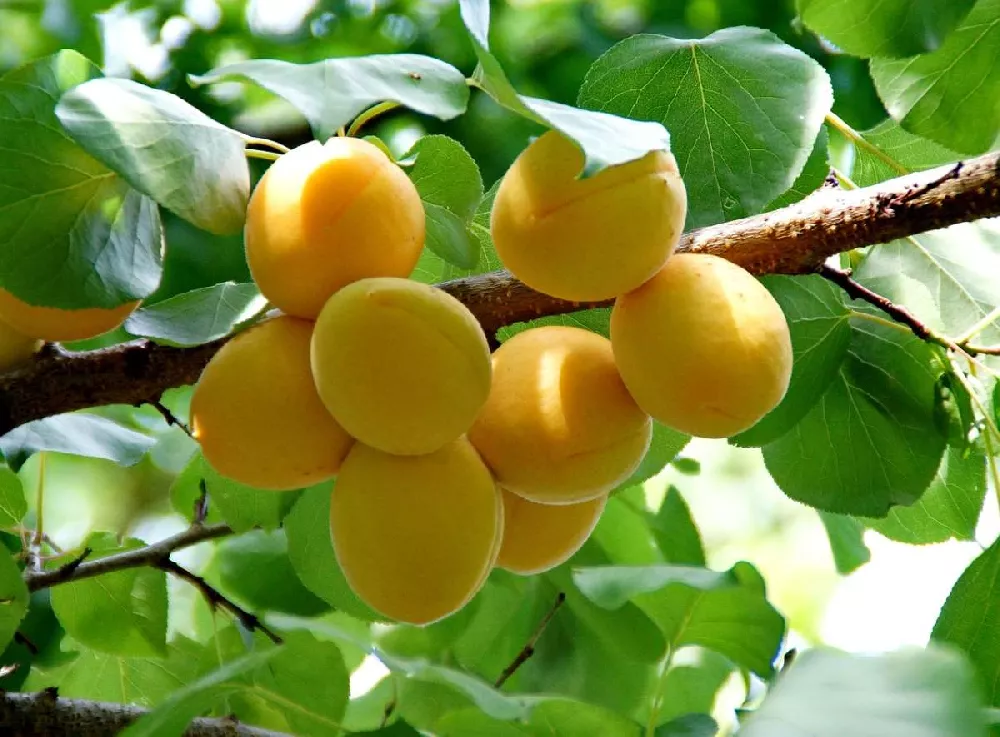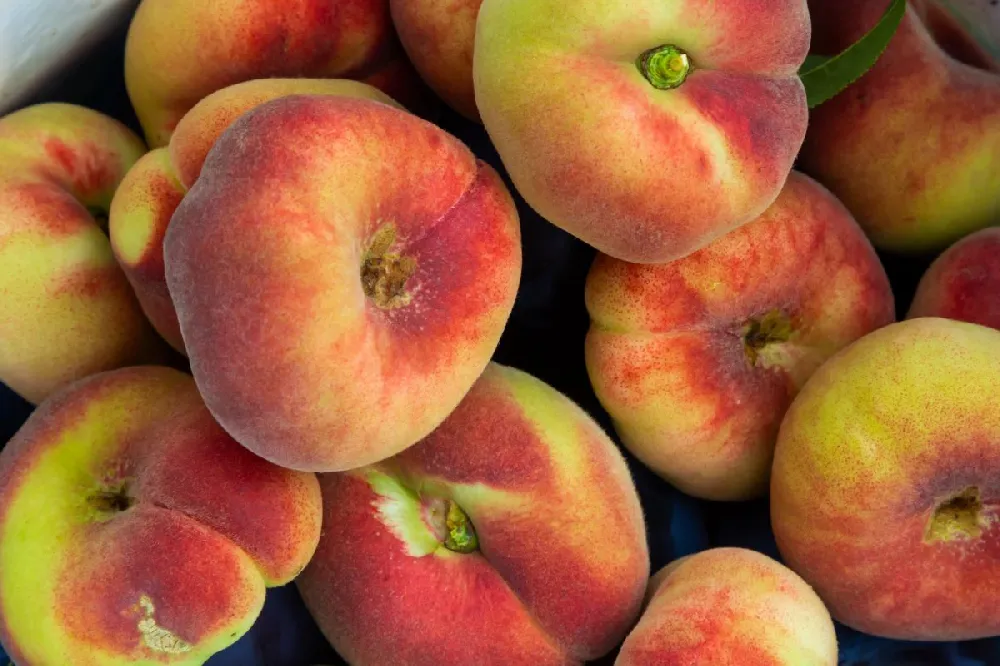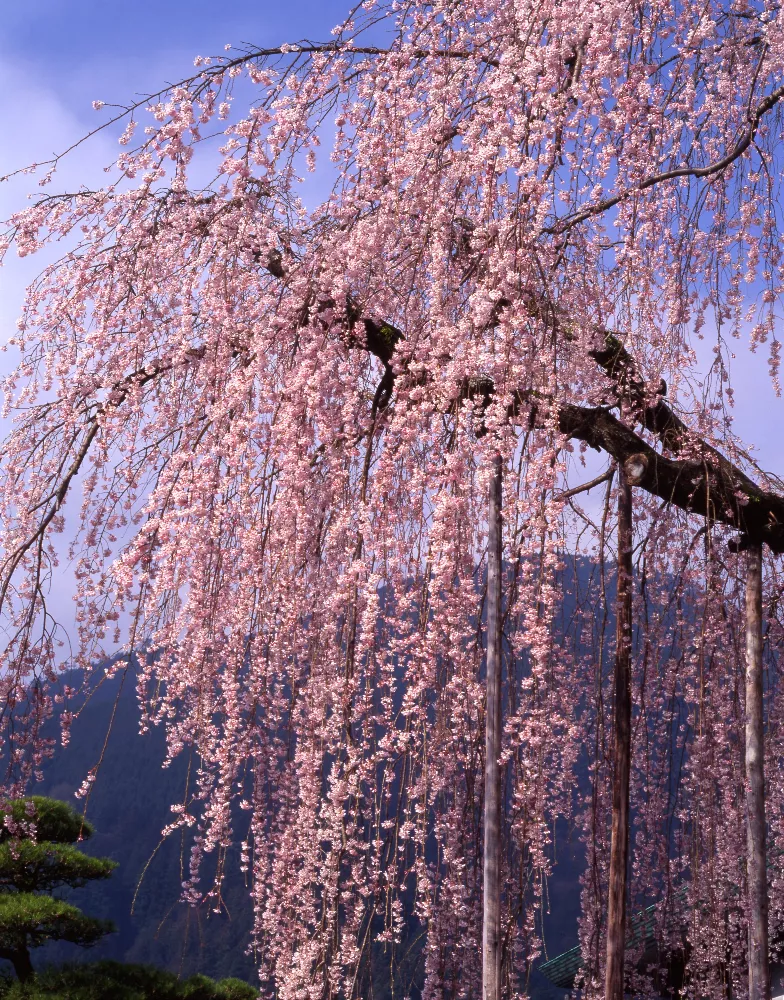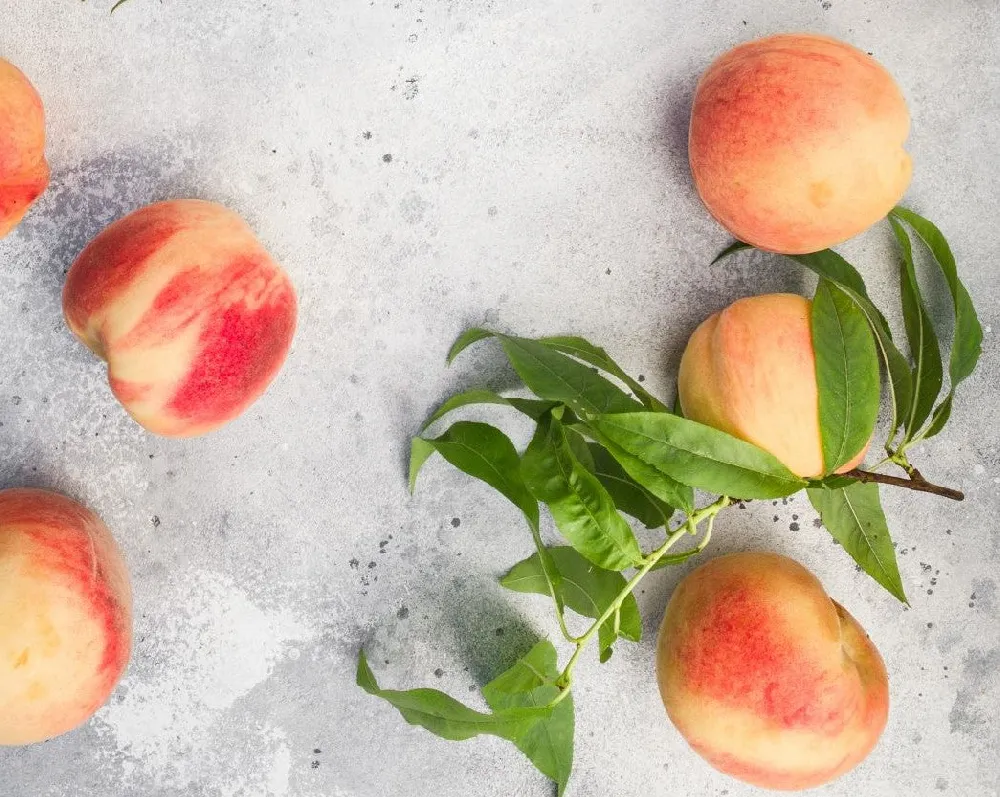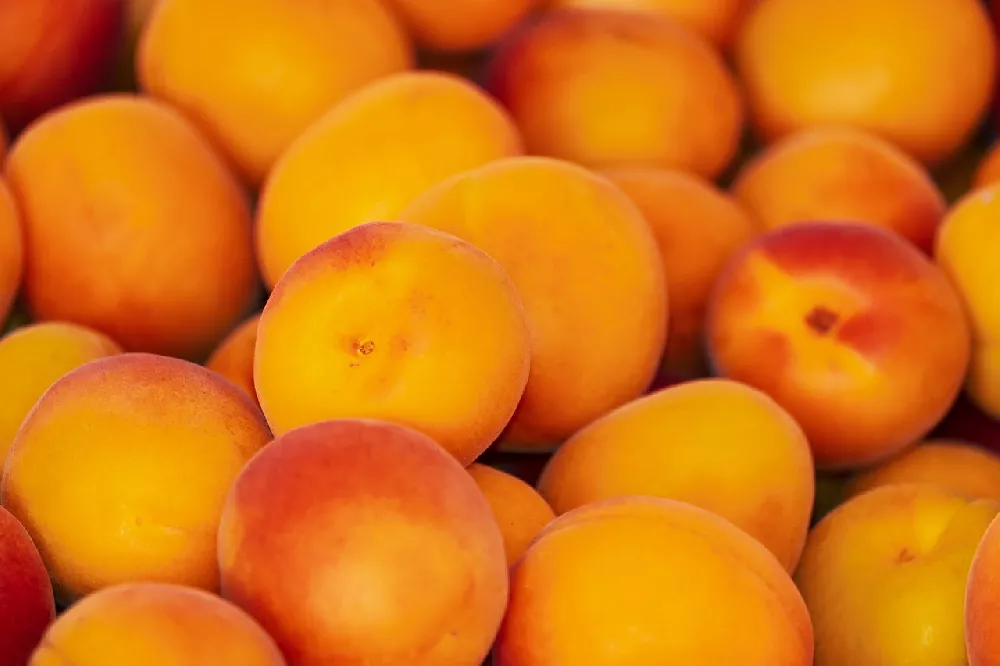- Home >
- Edible Plants >
- Santa Rosa Plum
Santa Rosa Plum for Sale - Buying & Growing Guide
- Ships in 1-2 days
- 1-Year Warranty Eligible
- Pots or accessories are not included unless specified in the product options.
Shipping Details:
Once your order is shipped, you’ll receive an email with a tracking number and estimated delivery date. Most orders ship immediately, but some items are seasonal and may only ship in spring or fall. These products are noted on the website.
The Santa Rosa plum tree, Prunus salicina 'Santa Rosa,' is almost legendary for the quality of its fruit, which is sweet, juicy, and perfect for fresh eating as well as using in recipes. This mid-sized tree is also an attractive addition to your garden, featuring lovely fragrant white blooms in spring and a softly rounded canopy of bright green leaves throughout the growing season. Another plus? The Santa Rosa plum tree only needs 300 chill hours each winter in order to produce fruit, so it can be grown further south than many cultivars — in fact, it thrives as far south as Texas and most of Florida. The Santa Rosa plum tree is self-fertile, but you'll get a larger harvest if you plant another plum tree near it to allow for cross-pollination. Here are a few more reasons to add a Santa Rosa plum tree to your garden:
- The Santa Rose plum tree may produce fruit only a year after planting.
- It attracts pollinators such as honeybees.
- It doesn't require the level of care that some fruit trees do.
Plant Care
Sunlight

The Santa Rosa plum tree thrives in full sun — six or more hours of direct light a day.
Watering
Water your Santa Rosa plum tree weekly with about an inch of water each time, or more if leaves turn brown or wilt.
Fertilizing

Fertilize lightly with a 10-10-10 product designed for fruit trees; keep feedings light when trees are young.
Planting and Care
Planting instructions
Site your Santa Rosa plum tree where it will get full sun in well-drained, sandy soil with a pH of roughly 5.5 to 6.5. Avoid planting it under overhead utility cables, and, if possible, plant it away from prevailing winds in your area. Unpot your sapling and tease out any encircling roots, which can girdle the tree and slowly kill it. Dig a hole that’s as deep as the root ball and two to three times as wide. Place the tree in the hole, and fill in around it with topsoil, tamping down as you go to eliminate air pockets. Water thoroughly. Apply a layer of an organic mulch, such as bark chips, around the root zone to conserve moisture and hinder weed growth, but keep it from touching the trunk, which promotes rot.
Watering and nutrients
During your tree’s first growing season, water it thoroughly twice a week. A mature Santa Rosa plum tree needs about an inch of water a week, either from rain or supplemental watering. Feed trees that are less than 3 years old annually with a half cup of a slow-release balanced fertilizer, such as a 10-10-10 formula, watering thoroughly after application. Older trees can be fertilized more heavily with the same balanced formula in spring, using roughly 8 ounces for every year of the tree’s age.
Pollination
Santa Rosa Pplum trees are self-fertile, or monoecious, which means that a single tree has both male and female reproductive organs. What that means for you is that you can harvest plums even if you only have one tree. Your tree will bear more heavily, however, if you plant another plum tree nearby.
Pruning
Other than pruning diseased, broken, or dead branches, which should be done whenever you see them, prune your plum tree in late winter before the buds break in spring. Prune to establish a strong central leader (trunk) with roughly five scaffold branches equally spaced around it. Prune out about 20% of new growth each year to encourage new branches. You may also need to prune out some of the fruit on branches that are weighted down.
Pests, diseases, and animals
Pests of the Santa Rosa plum tree include the scale insect, leafrollers, and aphids. Consider releasing beneficial insects, such as ladybugs and lacewings, to help naturally control the insect population on your trees. If necessary, use a chemical insecticide, but only as a last choice. Diseases of the plum tree include leaf curl and scab. These are both fungal and can be addressed with a general-purpose fungicide. You may also find birds attracted to the developing fruit on your tree. Netting is available at garden centers and online that can be used to keep birds away from the fruit. Monitor it carefully, though, because smaller birds can get caught and may need to be released.
Harvesting
Pick your plums by hand. They are ready when they release easily from the tree and are no longer firm to the touch. A good way to tell if they’re ripe is to try one — it should be sweet and have soft, juicy flesh. Store your plums in a cool spot. The best place to store them is someplace humid that averages 32 to 40 degrees Fahrenheit.
Achieving maximum results
Many people shy away from growing fruit trees because it can seem complex and much more difficult than, say, picking up a dozen plums at the supermarket. But it doesn’t have to be, and it can be a rewarding experience. There is a wealth of information online about pruning fruit trees, and although it doesn’t all agree, you should know that there is no one right way to prune, and your trees will forgive you for any mistakes. The same is true with spraying. There are a variety of fruit tree sprays that can be used to hinder fungal growth, eliminate insects, and control disease. But there’s no one right way to use sprays, and your best bet is to keep an observant eye on your trees and respond as necessary when you see something that doesn’t look right.
FAQs
Where can I grow a Santa Rosa plum tree?
How is a Santa Rosa plum tree best used in my landscape?
A Santa Rosa plum tree is more than just a supplier of fruit: It's an attractive specimen tree with lovely spring blossoms that can hold its own in any garden setting. A single tree situated in a front yard underplanted with shade-loving perennials would be elegant. A Santa Rosa plum tree would be a natural fit for a cottage garden, as well. If you are growing multiple trees, consider placing one on each side of your front entrance for a stately welcome to visitors.
How big will my Santa Rosa plum tree get?
A mature Santa Rosa Plum may reach a height of 25 feet, which is why it should be kept away from overhead utility wires. It has a broad, rounded canopy that can reach a width of 20 feet, so this factor should be taken into consideration when spacing your tree next to your home or other structures. If you are planting two or three trees together, space them about 20 feet apart from each other to allow for free air circulation when they are grown.
Compare Similar Products
You can't add more Product Name - Product size to the cart.
OK